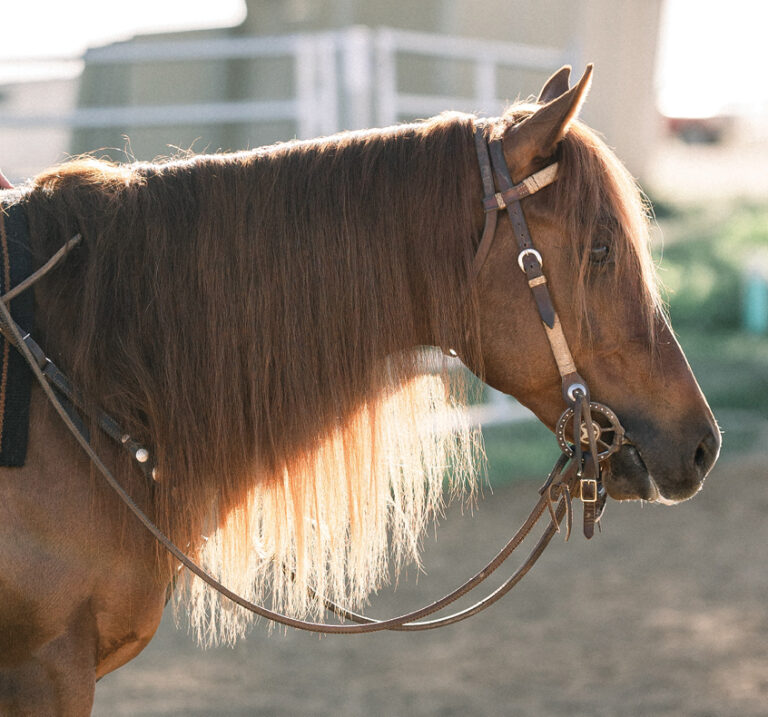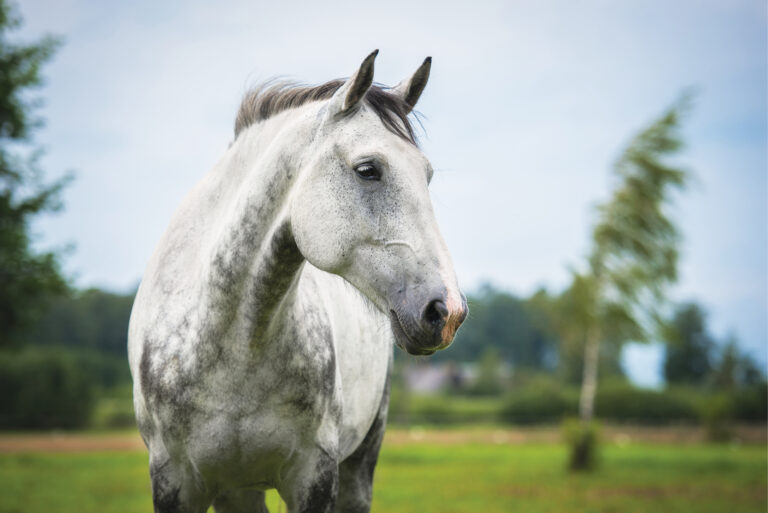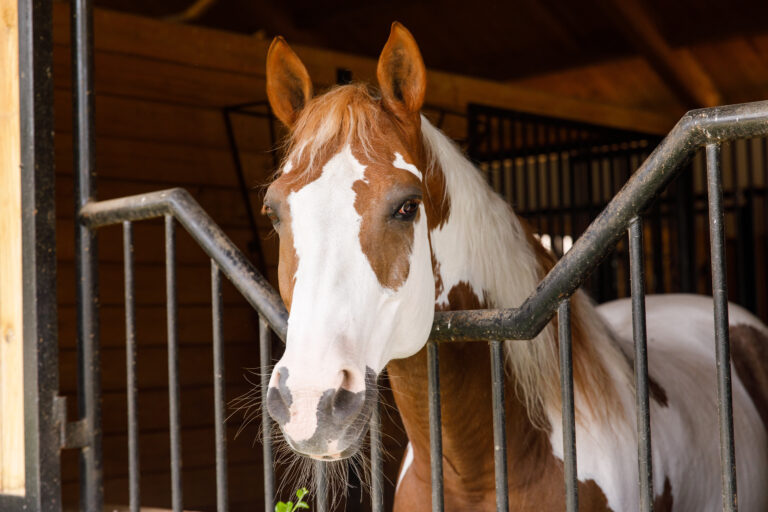Your horse charges across a pasture, his coat glowing, his gait exuberant. He’s the picture of health and happiness, and it’s how you love to see him. Getting–and keeping–him there, however, is the challenge. Might some do-it-better resolutions on behalf of his health be in order?
We think so. To boost your brainstorming efforts along this line, we contacted four horse-health experts for their resolutions-worthy advice. Their tips cover a range of categories, from targeting your horse’s basic needs to honoring his equine nature. We also share some evergreen horsekeeping reminders (see “Ten Commandments of Horse Management” below).
So, sit back and visualize your horse at his glorious best, then read what our experts say about getting him there.
1. Allow for Movement
Exercise, whether at liberty, with a handler, or under saddle, is key to a horse’s physical and mental well-being on many levels.
“For animals made to move, standing in a stall 24/7 doesn’t cut it,” says veterinarian and applied animal behaviorist Bonnie Beaver of Texas A&M University. Physically, different types of movement–meandering around the pasture, bursts of speed during play, trail riding and schooling sessions–all play a part in a healthy gut, well-lubricated joints, strong feet and bones, and musculoskeletal health.
If your horse doesn’t have access to pasture, your part in his fitness is especially critical. “Riding, longeing, and hand grazing can all contribute to a horse’s mental and physical health,” Beaver says. “Change it up and don’t do the same thing all the time. If your time is limited, consider sharing exercise time with a friend. On days you can make it to the barn and she can’t, offer to turn out, hand graze, or longe her horse while yours is cooling out; and ask if she’ll do the same for your horse.”
2. Let Him Be Social.
As a herd animal, horses crave companionship, and they gain social skills that help them learn appropriate behavior. A young horse turned out with a wise old gelding will gain an education unmatched by human schooling.
If you don’t have other horses or there isn’t a place to turn them out together, consider getting your horse a companion, Beaver says. Stall a goat or donkey with him. Or, if you have access to an indoor arena, consider checking to see if you and other owners can turn a few well-acquainted and compatible horses out in the arena when it’s not being used, she suggests. Your horse will have time to hang out with his friends, and he’ll be gaining some time to move, as well.
3. Give Him Time to Graze.
Hand-in-hand with exercise and socialization is grazing time. If you’ve ever watched a horse graze, you’ll have noticed that he nibbles a few bites, takes a few steps, then nibbles and steps some more. This process not only helps lubricate his joints and keep his feet healthy, it also keeps his digestive system active and more closely resembles life in the wild.
If you don’t have access to pasture, feed hay on the ground (in feeders or on mats) but divide it into several portions spread around his stall or paddock so that he has to amble from one pile to the next, much as he would while grazing.
4. Provide Mental Stimulation.
A bored horse is not only unhappy, he’s also more prone to stall vices and the illnesses that result from them.”Animals get hardwired to those vices, so your best bet is to prevent them,” Beaver says. Movement, socialization, and grazing can help. If your horse is stalled, or in a small paddock or dry lot, try to make it possible for him to see other horses and barn activity (try stall guards in place of stall doors).
And consider offering him toys to keep his mind busy. Search online for stall toys like Likits and Jolly Balls, or make your own. Hang a gallon milk jug in your horse’s stall with some feed pellets rattling around inside. He’ll keep busy trying to tip the jug enough to spill a few treats. (For more on stall vices, see “Not So Vice,” November ’06.)
5. Respect Your Horse’s instincts.
As a prey animal, your horse sees and understands things from a unique perspective. “Think about how amazing it is that horses let predators get on their backs,” says E. W. “Buff ” Hildreth, a Houston-area equine veterinarian. “The difference between people who own horses and horsemen is that horsemen are people who appreciate the sacrifice a horse has made to have a relationship with a predator–a human being.”
By keeping that perspective in mind, you can be more alert to safety issues and you’ll have a greater understanding of the why behind your horse’s reactions.
6. Avoid Imprinting Fear.
In her book Animals in Translation, Temple Grandin, assistant professor of animal science at Colorado State University, talks about how her autism helps her to think as animals do–in images. Horses, she says, can develop “fear memories.”
“It’s a picture in the horse’s mind of something he’s looking at when something frightens him. One horse who was afraid of a ‘naked’ white saddle pad had had a rough sacking out with one.” The image of that white saddle pad triggered fear memories for the horse. “It’s a ‘feeling’ picture,” adds Grandin. “You can train an animal to ‘close’ the fear memory file, but you can’t delete it.”
For this reason, behavior problems can plague a horse for his lifetime. However, by proceeding slowly with a horse’s training, watching for signs that you’re pushing too hard (tail wringing, fearful expression) and ending a training session before a horse blows up, you can help keep fear images from forming.
7. Create a Safe Environment.
Sometimes it seems as if horses are accident magnets. You’ll never be able to prevent every accident from happening, but by being alert to potential dangers, you can avoid many.
Make it a habit to walk your horse’s pasture and fence line regularly (an easy way to work on your own fitness resolution), checking for stray litter, hay strings, items that can be ingested (and may lead to colic), poisonous plants, and unsafe sections of fence. Check your horse’s stall or pen for sharp objects or items he might catch his blanket on. Be extra vigilant on windy days, when you’ve moved your horse to a new location, or he has new pasturemates.
8. Listen to Your Horse’s Subtle Cues.
Hildreth recalls a client calling about a horse who had suddenly become cinchy–biting at her whenever she tightened the cinch. After asking a few questions, Hildreth learned the client had gotten a new saddle six months earlier. She told her to check the saddle fit. When the client seemed doubtful, Hildreth pointed out that the horse had probably been offering subtle cues of discomfort, but finally turned the volume up by making his cues more obvious.
“It was the only way he could get you to make this phone call,” she told the client.
If a horse is resisting or striking out, it’s often either fear or pain that’s making him do so. (For more, see “Signs of Pain,” October ’02.)
9. Honor Your “Inner Voice.”
If you see your horse in the pasture or stall and something doesn’t “feel” right, listen to your instincts. Even if there isn’t anything obvious (like bleeding or swelling), if you see something out of character for your horse, bring him in, check his vitals, and call your vet if you’re still uneasy.
10. Invest Quality Time in Your Horse.
Knowing your horse well will help you read his subtle cues of pain, fear, or illness. Grooming and equine massage can help alert you to pain or injury, build the bond you have with your horse, and even lower your horse’s stress levels.
To add some variety to your horse’s schooling (and improve his manners and focus), set aside time each week for groundwork. (Check out Lynn Palm’s DVD “Agility Course”–www.lynnpalm.com–for a fun approach to groundwork.)
11. Give Your Horse a Break.
Keep an eye out for burnout. If you’ve been schooling and showing heavily, try building in a break when you can. Hildreth’s horses are in cutting training, and she’ll often bring them home for training breaks
“You want a vacation every year, and your horse needs time off, too,” she says.
12. Seek Knowledge and Advice.
Observe yourself as well as your horse. If you start to feel reluctant to ride, anxious, or frustrated, seek out a trainer who will work with you and your horse to uncover the problem and help you work through it. There may be physical reasons for your horse’s struggles, and a pro can help you determine what’s going on
13. Choose High-Quality Hay.
John Howard has been feeding horses for 40 years, and is an award-winning hay grower and forage expert in Austin County, Texas. He advises horse owners to be fussy when they shop for hay.
“Find a reputable grower, who consistently grows quality hay, even if it costs you more,” he says. “Look for leafy hay (if it’s too stemmy, you’ll risk colic), and store it on pallets, or another surface where the hay won’t draw ground moisture.”
14. Offer Hay Free-Choice.
Howard likes to see horses get 1 to 2 percent of their body weight in hay each day. He gives free-choice hay to simulate pasture. “Horse are natural grazers,” he points out. “Free-choice hay gives them something to nibble on, stimulates the gut, and helps their mental state.”
And, because alfalfa is a higher-energy hay, he’ll offer it with grass hay. During cold weather, he feeds alfalfa in the morning for energy, then gives grass hay at noon and again at night. When it’s warm during the day, he offers grass hay in the morning and at noon, then gives alfalfa at the evening feeding, when temperatures drop.
15. Don’t Overfeed Grains.
Most horses eat grain with relish, which makes horse owners happy to give it to them. But if your horse isn’t in training or physically active, he doesn’t need much grain.
If your horse is heavy, cut back on the grain, not the hay, says Howard. Some horses–particularly those that are inactive and overweight–may only need a cup of grain, mixed with any supplements you give.
TEN COMMANDMENTS OF HORSE MANAGEMENT
1. Follow a regular vaccination schedule. Work with your vet to determine what your horse needs for your area (or for areas he travels to), and when he needs it.
2. Introduce feed changes slowly. Adding supplements or changing feed too quickly can spark colic. A good rule of thumb is to introduce new feed gradually over two weeks.
3. Follow a regular feeding routine. Horses thrive on routines, and a regular feeding schedule will help ward off colic and stress.
4. Feed frequently. If you can’t feed free-choice, divide the daily ration into as many feedings as possible–three or four if you can, and two at least.
5. Schedule regular visits with the farrier or trimmer. Keeping your horse’s feet healthy means a “pedicure” every six to eight weeks.
6. Provide consistent dental care. Schedule appointments annually to have your horse’s teeth checked and floated.
7. Manage pests. Flies and biting insects carry disease, and can stress your horse and make him miserable. Make sure you have a good fly management program in place (see “Buzz Busters,” April ’06).
8. Set up a deworming program. Work with your vet to determine appropriate dewormer for your area. In regions where the temps don’t get cold enough to kill larvae and eggs, you may choose a daily wormer.
9. Provide clean water at all times. Horses need 8 to 10 gallons of water daily (or more, depending on how active they are and how hot it is) to stay healthy. Make sure tanks are clean and full, and use a water heater where water freezes.
10. Provide as much turnout as practicable. Horses need to move!
This article originally appeared in the January 2007 issue of Horse & Rider. For the latest thinking in cribbing management/prevention, see Whole Horse Q&A in the September 2010 issue.






